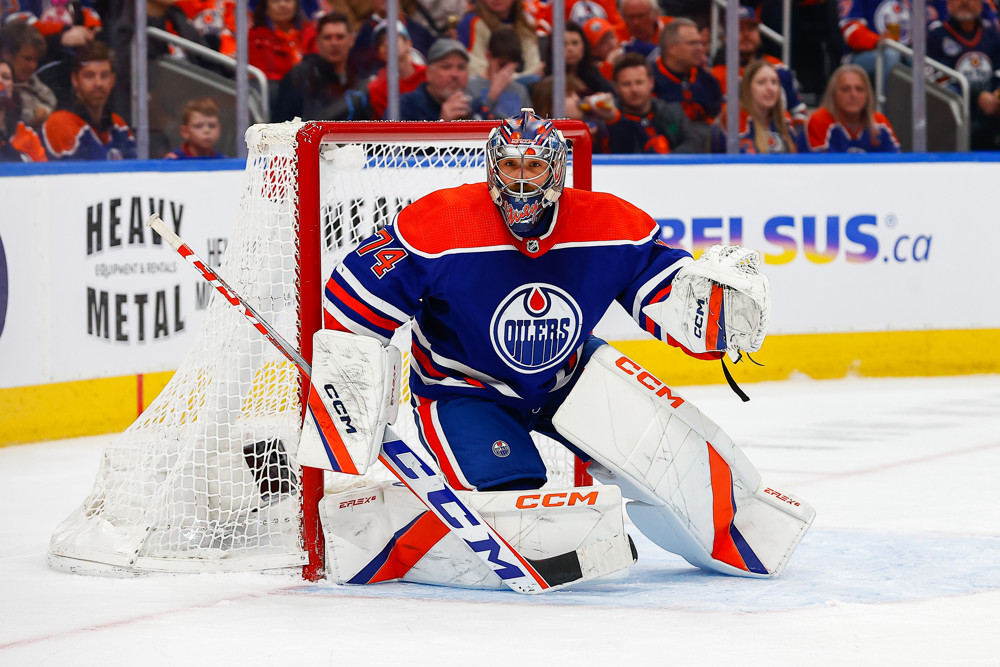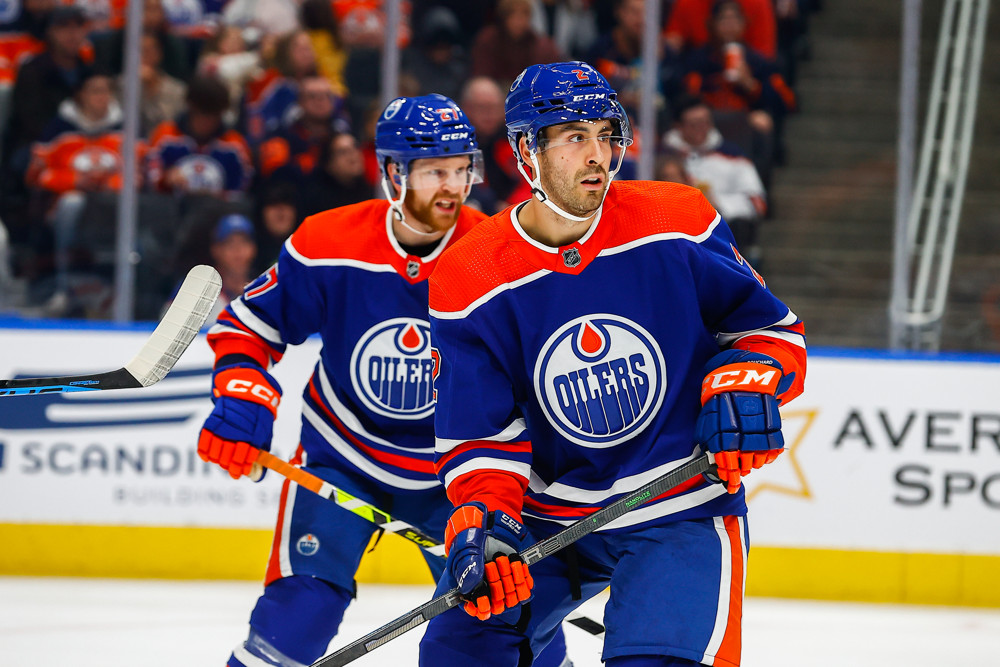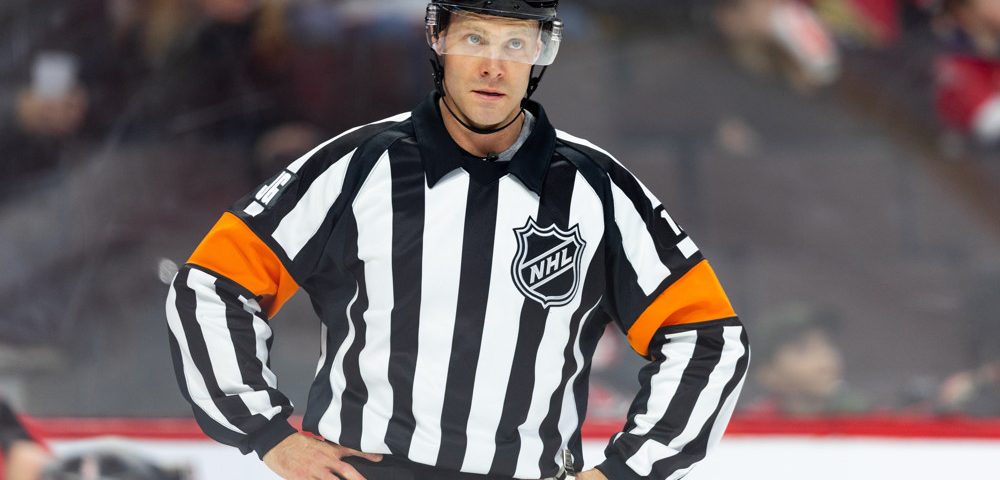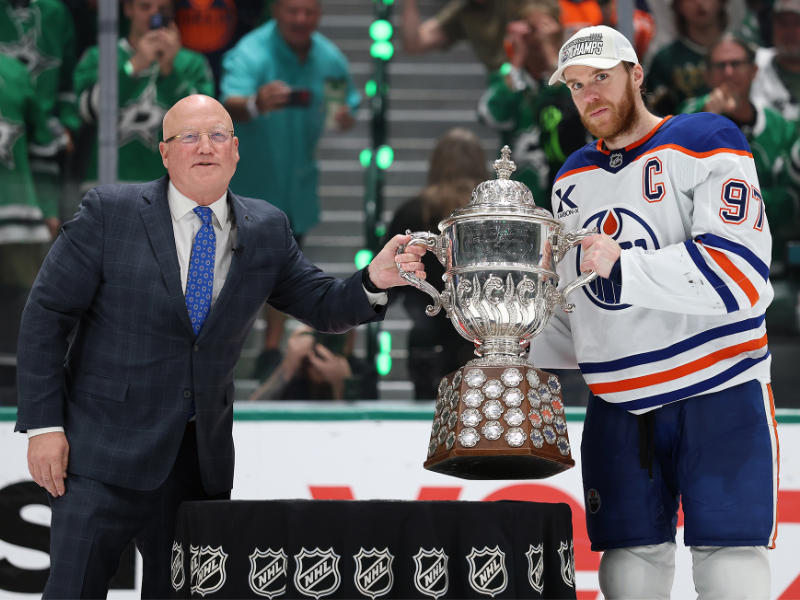
Stuart Skinner announced as a finalist for the Calder Trophy
May 4, 2023
Oilers-Golden Knights: Round 2 Playoff Preview
May 4, 2023Was the opening round of the playoffs so entertaining because of how the NHL runs, or in spite of it?

OTTAWA, ON - JANUARY 02: Referee Gord Dwyer (19) after a whistle during first period National Hockey League action between the Florida Panthers and Ottawa Senators on January 2, 2020, at Canadian Tire Centre in Ottawa, ON, Canada. (Photo by Richard A. Whittaker/Icon Sportswire)
May 3, 2023 by Josh Boulton
The first round of the 2023 Stanley Cup playoffs was sensational. The parity in the National Hockey League leaves everything wide open, and in several cases the possibilities became reality.
The defending Stanley Cup Champion Colorado Avalanche? Gone. They lost Game Seven on home ice to the Seattle Kraken, who made history by winning their first ever playoff series as a franchise. The best regular season team in NHL history, the 2022-23 Boston Bruins? Gone. They also lost Game 7 on home ice, in an overtime thriller to the Florida Panthers.
The Toronto Maple Leafs drought of 19 years without winning a playoff series? Over. They finally advanced to the second round after defeating the Tampa Bay Lightning, also in an overtime thriller. There’s been so many fascinating storylines and dramatic events it’s been hard to keep track.
As exciting and fun as it’s been so far, we can’t forget that a player suffered a fractured neck in the process. Andrew Cogliano of the Avalanche was injured in Game 6 of his first round series when Jordan Eberle of the Seattle Kraken delivered a hit from behind, sending Cogliano very awkwardly neck first into the boards. Eberle was only issued a two minute minor penalty on the play, and the NHL’s Department of Player Safety chose not to issue any further discipline.
It was an easily preventable serious injury, and the play that caused it was given the lightest possible punishment a player can receive. I don’t think it’s a coincidence that the most chaotic overall first round in memory overlaps with arguably the most tumultuous officiating in memory mixed in, and that one of the most serious injuries became the result. It can’t be overstated that the NHL has made a habit of putting entertainment and profit ahead of everything else.
In fact, the very parity that makes this league so enticingly unpredictable could be easily called into question. How much of it is organically generated based on teams legitimately being so evenly matched, and how much of it is fabricated by strategically inconsistent officiating? I want to be clear I am in no way attempting to cast a shadow on the integrity of the NHL’s officiating staff. They’re just the faces at ice level delivering the message.
As in any organization of this size and magnitude, there will always be individuals who may or may not be acting on personal agendas and biases, but overall the problem isn’t with them. It’s systemic. There’s such a cloud over the standard of penalties, over what to call and when, and too many loopholes and generalities in the rulebook that makes things left open to interpretation. Unfortunately that has become a talking point too big to ignore in literally every single series, and it has to be asked how much of it is by design.
Related: NHL officiating is officially the story of Oilers-Kings series
The NHL wants, encourages, and even demands violence. Any rule changes or decisions over the years pertaining to player safety have been made begrudgingly, and with painstaking care not to affect the physicality of the game, because the NHL’s level of physicality and aggression is what they deem as the main selling feature of the sport. I just can’t help but wonder why the physicality created through the natural course of play isn’t enough.
Hockey is a fast, aggressive game with violence literally built into the fabric of its core. Why is it so necessary in the opinion of the NHL to artificially insert more? For example, does it actually help the sport to let three crosschecks to the back go uncalled so that the receiving player gets mad enough to turn around and thump the antagonizer in the teeth with his stick, and then put both players in the box anyway? Would it really be a detriment to make the first call so that the second incident (and the ensuing injury) never happens?
Would it really hurt the value of the NHL to ask officials to call penalties based on which team commits the most infractions instead of based on which team’s turn it is to get a power-play? Instead of on which team needs a goal? Instead of on how late in a game the crime occurs?
And in the case of protecting Cogliano, is it really too much to ask a player to not hit when it isn’t safe?
On paper the right mentality is there. The onus is on the player delivering the check to do it safely. That’s the way it should be. It’s sad that in the mid-2000s this was such a groundbreaking shift in thought process that literally went against everything the NHL stood for. What’s frustrating is the NHL has never really, truly changed.
Physicality to the NHL still means protecting a player’s right to finish a check more than protecting a player’s right to play the puck. To be fair, this philosophy is true of all levels from hockey operations, to the Department of Player Safety, to the team Owners and General Managers, even to the NHL Player’s Association itself, which tends to protect the perpetrator in disciplinary hearings more than the victim.
The NHLPA negotiates to limit the dollar amounts of fines and game amounts of suspensions, but it works out well because the Department of Player Safety is only at liberty to hand them out sparingly. As a result, players keep doing unnecessarily dangerous things, officials keep calling them inconsistently and sporadically, and the Department of Player Safety keeps either giving out slaps on the wrist or ignoring things completely.
The question is with a shift in philosophy on NHL violence, a tighter standard of the rulebook, more consistent officiating, and appropriate punishments for avoidable danger, would this opening round of the Stanley Cup Playoffs have played out the way it did? For the sake of the long term health of the players, the time to find out is long overdue.

